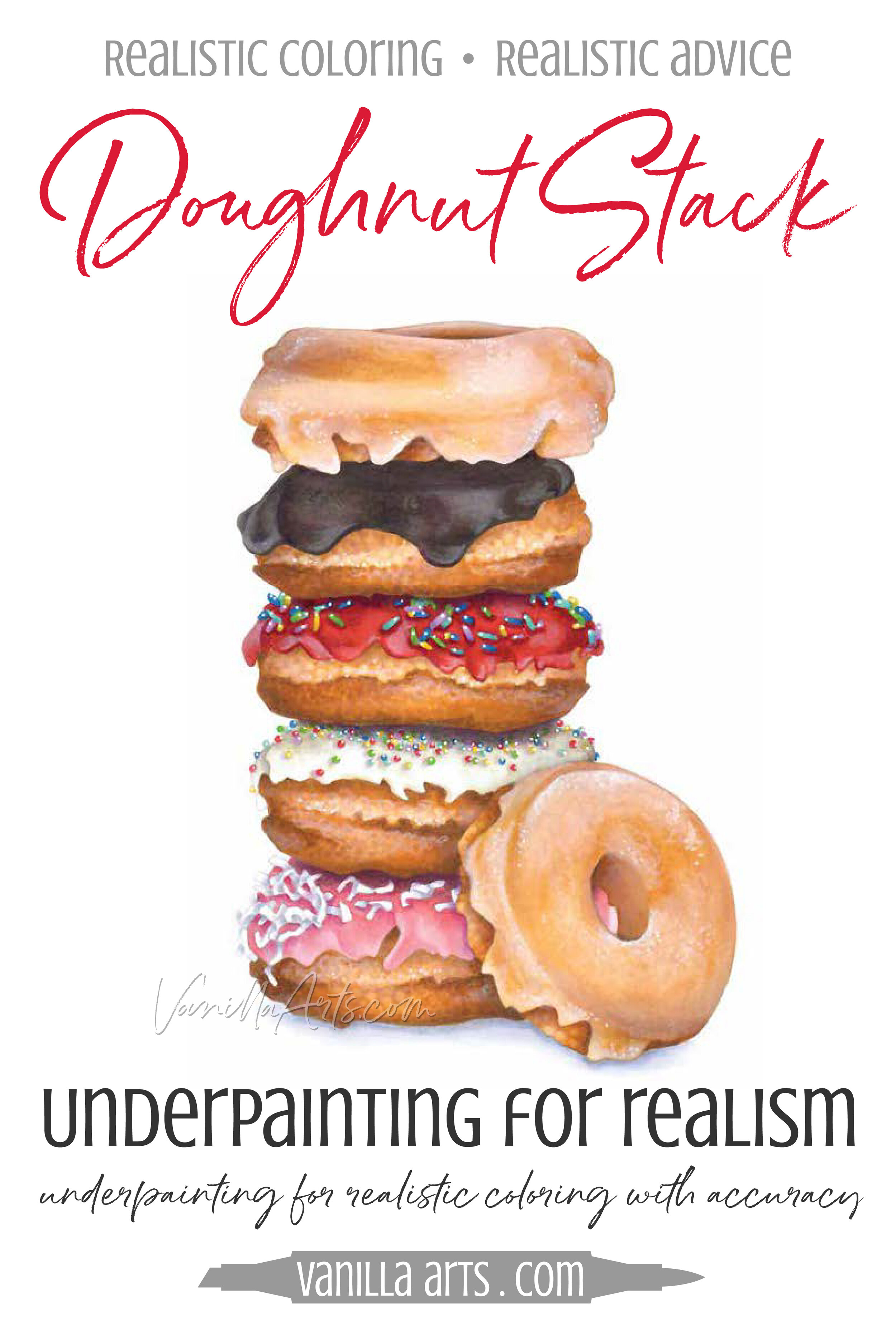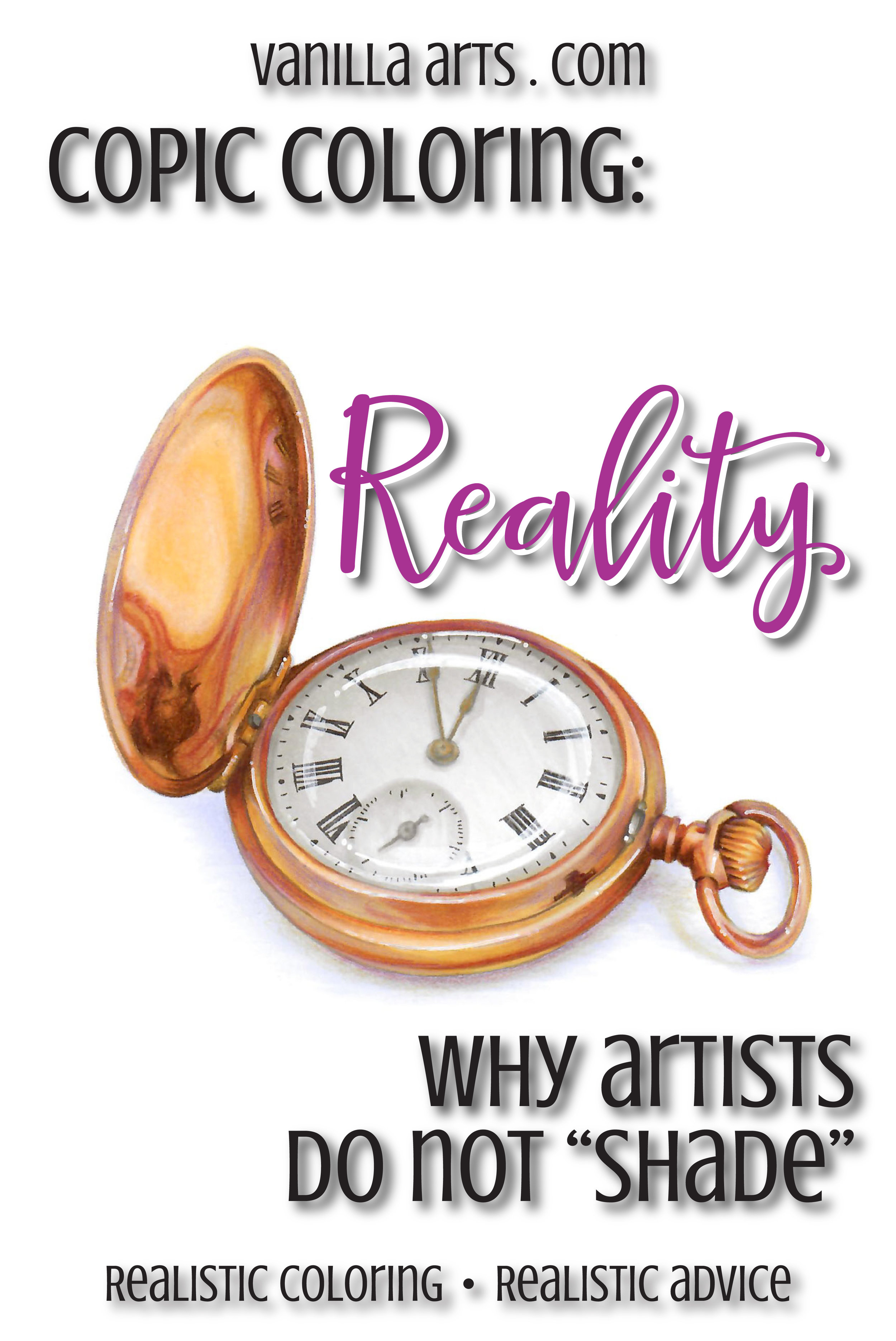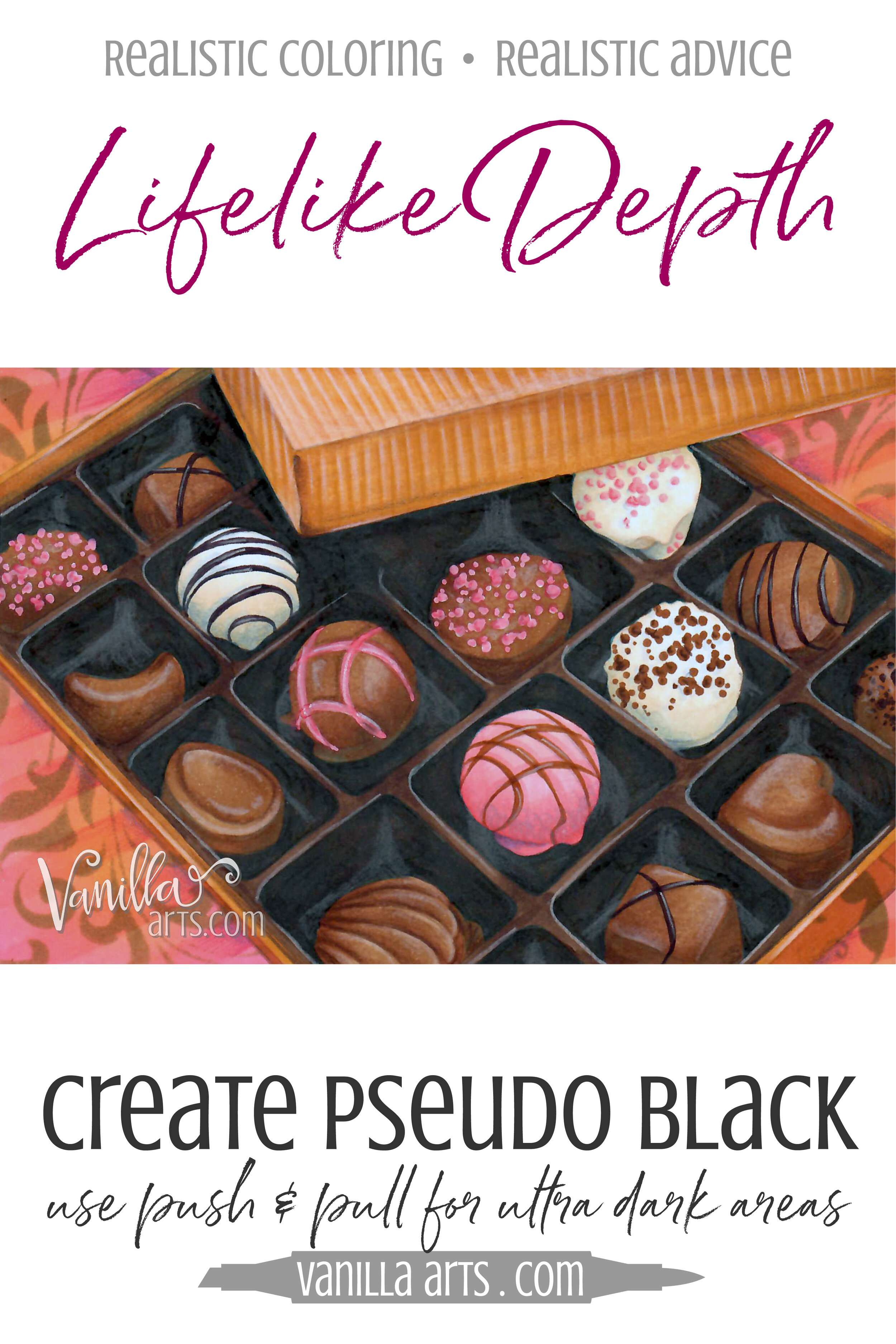
Doughnut Stack - Underpainting for Realism, Coloring with Accuracy
Glazed Heaven!
How about a special treat?
"Doughnut Stack" is an advanced skills level Marker Painting Workshop, a realism challenge for those of you who love food illustration! And I promise you, this whole stack of doughnuts is 100% calorie free! You might even burn a few calories coloring it.



